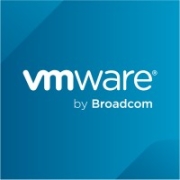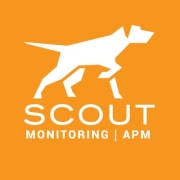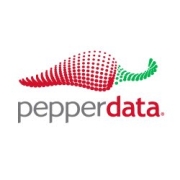Application Performance Monitoring (APM) and Observability help improve the efficiency of applications by providing visibility and insights into system performance.
Application Performance Monitoring and Observability involve tracking and analyzing the performance of applications and infrastructure. APM focuses on detecting and diagnosing performance issues, while Observability emphasizes gaining insight into the internal state of systems. By combining these approaches, IT teams can ensure better application health, enhance user experiences, and reduce downtime.
What are the key features to consider?
What benefits/ROI should you look for?
APM and Observability solutions are implemented across diverse industries such as finance, healthcare, and e-commerce, where application reliability and performance are critical for business operations and customer satisfaction.
APM and Observability provide organizations with better insight into their applications and systems, enabling proactive management and quicker resolution of performance issues.
| Product | Market Share (%) |
|---|---|
| Dynatrace | 8.9% |
| Datadog | 7.4% |
| Sentry | 5.8% |
| Other | 77.9% |





























































































































Application environments can be complex, but users will always expect apps to work regardless of time, which device they are using, or where they are located. Thus, monitoring the performance of business-critical apps is crucial to helping your business thrive and remain competitive. APM is an important solution used to ensure your applications can continue to meet your end-users expectations.
Application performance monitoring tools analyze how applications perform in order to determine if they are behaving correctly. If an app is not working appropriately, data and metadata are collected on the source of the issue. That data is then analyzed to observe its impact on the business and the information is then used for troubleshooting issues and optimizing performance levels. To do this, various types of instrumentation are used (such as distributed tracing of end-to-end transactions, agents for tracing Java or .NET code, APIs for observability, cloud or other platforms, etc.). The conclusive data and application performance metrics are usually visualized via intuitive dashboards. If and when performance levels exceed automatically-defined baselines, organizations can resolve issues by tracing transaction performance across their distributed infrastructure and can also utilize application mapping visualizations to clearly understand the dynamic and complex relationships between relevant components.
Measuring the performance of your applications involves the following metrics:
It is important to test your application performance to prevent bottlenecks and ensure a seamless end-user experience. To test your application performance you need to:
The best application performance monitoring solutions (APM) are important for proactively monitoring and managing a software application’s performance and availability. APM’s scope further includes performance measurement for virtually any IT asset that affects end user experience. The sign of the best APM tools are that they detect application performance issues in order to adhere to an agreed-upon service level. In particular, APM is focused on app response times under various load conditions. As part of this, APM also measures the compute resources required to support a given level of load.
According to members of the IT Central Station (soon to be Peerspot) community, the best APM vendors serve multiple masters. Developers need to understand app performance characteristics in order to ensure an optimal software experience for end users. Business managers and IT department leaders use APM data to help make decisions about infrastructure and architecture.
As applications grow more complex and interdependent, application performance monitoring users express high expectations for potential APM toolsets. Accessibility, manageability and scalability are essential. Users argue that an effective APM tool must give business stakeholders accurate, understandable data while allowing developers to dive deeply into stored data over the long term.
DevOps users want app performance management tools to measure the deep internal transactions that take place inside an application or between integrated system elements. They want APM data in real time, across multiple application tiers, with transparency along the entire application process chain. Some refer to this as “full stack tracing.”
Ideally, APM data should be measured against user experience as a key performance indicator. For example, if a bottleneck is being caused by database latency, users want to understand the root cause so they can fix it immediately. This might require an alerting based on patterns and “baselining.”
Some expect APM tools to enable the discovery of complex distributed application architecture or even microservices and containers. After all, not all application architecture is known at the outset, and it certainly changes over time. Users need APM tools to be proactive whether they are used in dev, test, QA or production environments.
The APM toolset itself should have low impact on application performance. The measurements it takes have to be easy to interpret and place into a business-friendly reporting output. For instance, IT Central Station members suggest that APM tools should offer a predefined customizable reporting capability, with high visibility and a capacity to export and report on large quantities of raw data.
Application performance management tools include a long list of benefits. Below are some of the most reputable ones:
A great application performance management tool will include features that will help you optimize the success of your organization.
Other critical features to consider are easy deployment, a user-friendly interface, privacy regulations support, and real-time analysis.
Application Performance Management (APM) solutions are essential for businesses to monitor and optimize the performance of their applications. These solutions provide insights into the performance of applications, helping businesses identify and resolve issues that may impact user experience and overall productivity.
There are several types of APM solutions available in the market, each offering unique features and capabilities.
Here are some of the different types of APM solutions:
1. Real User Monitoring (RUM): RUM solutions track and analyze user interactions with applications in real-time. They capture data on user behavior, such as page load times, response times, and user actions. RUM solutions provide valuable insights into user experience, helping businesses identify performance bottlenecks and optimize application performance accordingly.
2. Synthetic Monitoring: Synthetic monitoring solutions simulate user interactions with applications by generating artificial transactions. These solutions monitor application performance from various locations and provide data on response times, availability, and functionality. Synthetic monitoring helps businesses proactively identify and resolve performance issues before they impact real users.
3. Application Dependency Mapping: This type of APM solution maps the dependencies between different components of an application, such as servers, databases, and third-party services. It provides a visual representation of the application's architecture and helps businesses understand the impact of changes or failures in one component on the overall performance of the application.
4. Log Monitoring: Log monitoring solutions analyze log files generated by applications and infrastructure components. They help businesses identify errors, exceptions, and performance issues by analyzing log data. Log monitoring is particularly useful for troubleshooting and root cause analysis.
5. Database Performance Monitoring: These solutions focus specifically on monitoring the performance of databases. They provide insights into query performance, database response times, and resource utilization. Database performance monitoring helps businesses optimize database performance and ensure efficient data retrieval and storage.
6. Network Performance Monitoring: Network performance monitoring solutions analyze network traffic and monitor network devices to identify bottlenecks, latency issues, and network congestion. They provide insights into network performance, helping businesses optimize network infrastructure and ensure smooth application delivery.
7. Cloud APM: With the increasing adoption of cloud computing, APM solutions specifically designed for cloud environments have emerged. These solutions monitor the performance of applications hosted in public, private, or hybrid cloud environments. Cloud APM solutions provide insights into cloud resource utilization, scalability, and availability.